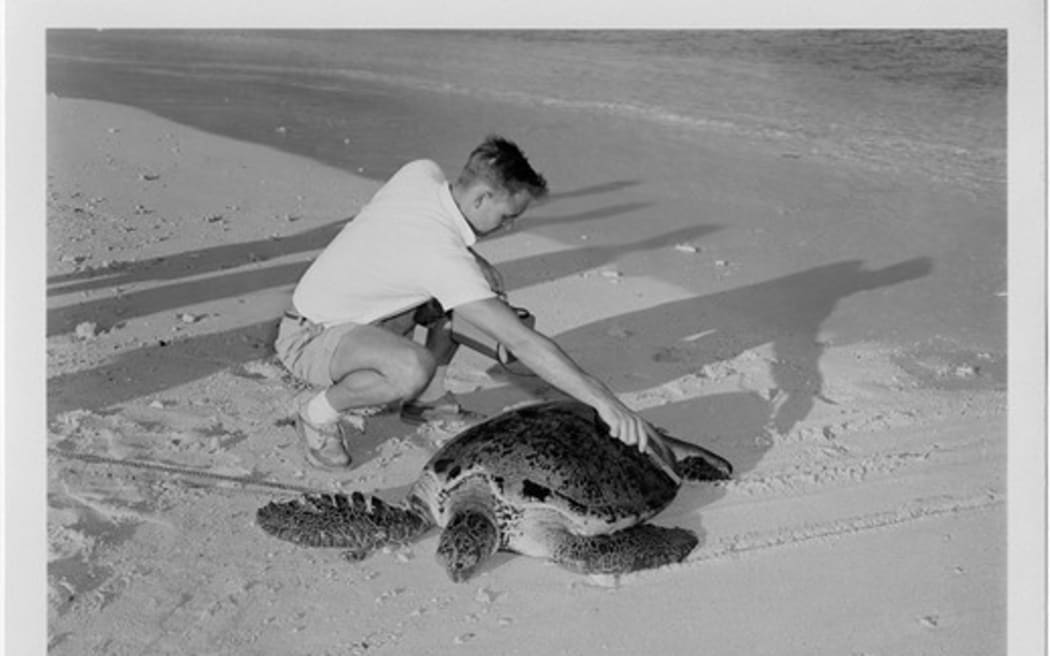Scientists studying tortoise and turtle shells near the Marshall Islands have found they contain nuclear contamination.
An article in the journal PNAS Nexus considered ‘Anthropogenic uranium signatures in turtles, tortoises, and sea turtles from nuclear sites’.
The scientists studied a sea turtle collected at Enewetak Atoll in the Marshall Islands [RMI] in 1978.
“In May 1977, one year prior to the collection of this sea turtle in 1978, cleanup activities began at Enewetak Atoll resulting in the creation of the Runit Dome containment structure,” the report on the study said.
Green sea turtles are migratory, but live, forage, and nest at Enewetak Atoll, the researchers said.
“The presence of uranium contamination in this green turtle [approximately] 20 years after nuclear testing ended in the RMI – thus suggests the potential that cleanup activities disturbed contaminated sediments which (re)input small quantities of local fallout products into the surrounding environment.”
It also notes that eating contaminated algae or seagrass, or ingesting contaminated sediments during nesting, are all potential sources of uranium for this green turtle.
“It is also possible that legacy contamination present in the Enewetak Atoll lagoon occurred in substantive quantities to contaminate this turtle at some point during its lifetime, regardless of potential impacts during the cleanup for Runit Dome,” the report said.
The scientists said further research on radionuclide contamination in Marshall Islands sea turtles was required to untangle these possible sources.
The researchers said they recognised the limitations present in their study, specifically that their analysis only includes individual turtles from each location and time.
They said turtles inhabiting locations with significant nuclear deployment histories, such as Japanese pond turtles; nuclear test histories like the Kazakhstan steppe tortoise; or nuclear processing, production, and accident histories like Ukrainian pond turtles will undoubtedly clarify the extent to which these reptiles bioaccumulate and reflect anthropogenic contamination in the environment.
“We anticipate that our green sea turtle results may influence future sea turtle-based environmental monitoring and tracking of contaminates at Runit Dome in the RMI, and potentially long-term releases of radioactive water from the Fukushima Daiichi reactors, into the Pacific Ocean,” he said.
SOURCE: RNZ PACIFIC/PACNEWS














